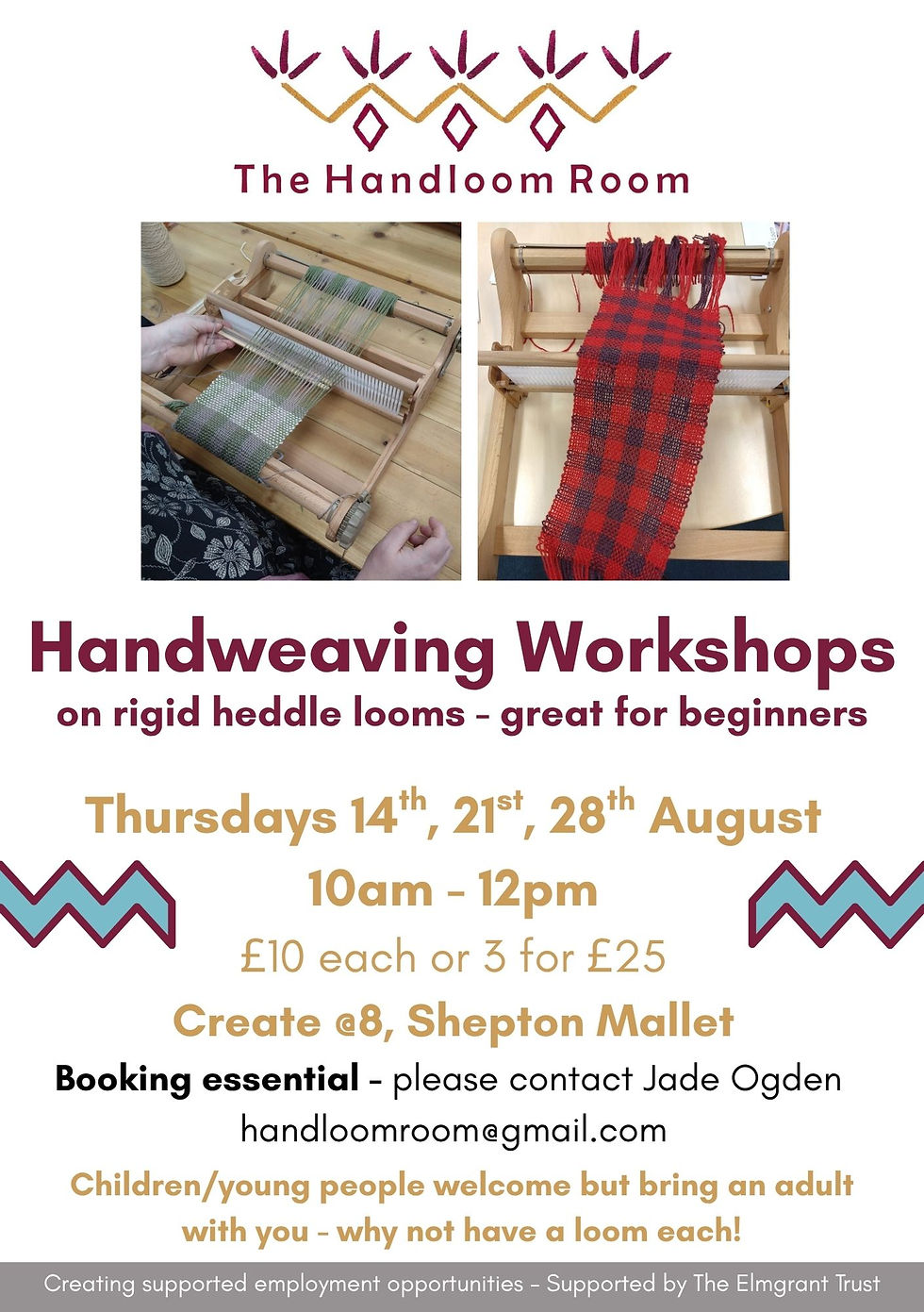Who Made My Fabric - for Fashion Revolution Week
- The Handloom Room
- Apr 21, 2021
- 2 min read

The fashion and textiles industry is one of the most polluting and wasteful industries. Seeking out alternative approaches to textile design is fundamental in helping to tackle the climate emergency.
This year, Fashion Revolution have introduced a new question for the public to consider - 'Who made my fabric?' Not only is it important to think about who made your clothes, were they working in safe conditions, were they getting a fair wage, but also the bigger picture - where did the fabric for my clothes start it's life - who and what was involved in that process?
Here at the Handloom Room, those answers are increasingly straightforward.
The Locally Crafted range is becoming ever more locally sourced, with the introduction of my new Truly Mendip range. Scarves in this collection have been created solely within the South West of England, fully traceable all the way from sheep to final product.
This year, I have also introduced some naturally dyed pieces to the Truly Mendip range. This process also took place within the South West. I sent my Fernhill Fibre wool to Bristol based Knitwear Designer Ria Burns, who hand dyed some skeins for me using locally foraged coreopsis, and madder grown in her back yard. The soft colours work beautifully alongside the natural shades of the undyed yarn.
So let's answer the question and find out who made your fabric, and what journey it took from farm to finished product!
The Shetland and Romney sheep live a contented life high on the Mendip Hills in Somerset.
They are regeneratively farmed in a way that actively increases the biodiversity of the land on which they dwell.
These well reared sheep made your wool, enriched by their wild, organic diet.
The wool was hand sheared at the farm using traditional methods.
The wool was processed and spun in Cornwall.
Some of the wool was sent to Bristol for natural dyeing with local plants.
The wool was woven and finished by me on my table loom in Mendip, Somerset.
The scarf is handwashed in warm water using an ecological non-bio detergent.
The scarf is dried outside on the washing line and then pressed.
The scarf is packed in brown paper and paper gum tape and sent by Royal Mail.
As a South West of England Fibreshed member, it is becoming increasingly clear to me that there are many possibilities of creating fully soil-to-soil (grown from the soil and returning to the soil at the end of it's life) fabric and garments. Spending a little longer searching for them is well worth the time!
Fashion Revolution have a toolkit to help you to take action to call for transparency in textile supply chains, or to simply learn more about the issue. All the info is here!



Comments